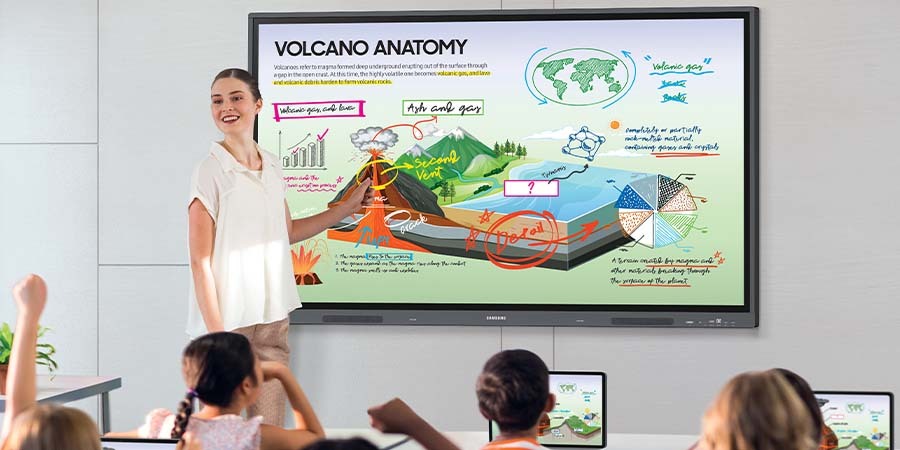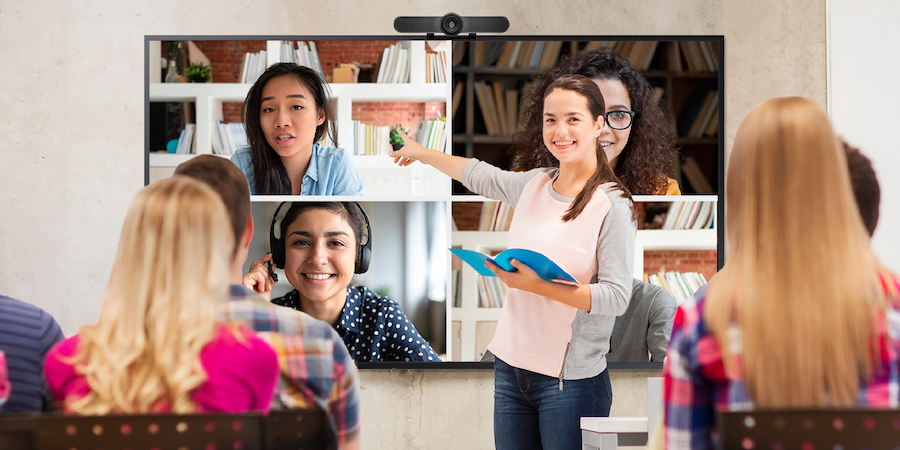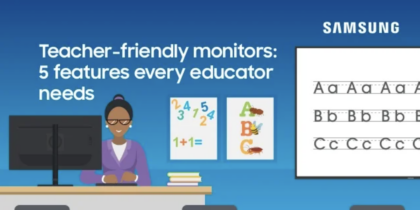Many educators are striving to make their instruction more diverse, equitable, inclusive and accessible (DEIA) to better serve all students. This means incorporating new tools into the classroom — physical, virtual and hybrid — and employing them in a new, more dynamic approach to education.
As in so many arenas, technology provides the way. That includes hardware such as interactive and digital displays, as well as the software and applications that make the most of them. Together, they can help every student engage with lesson materials regardless of background, skill level and ability. With these tools at their fingertips, teachers are better able to achieve DEIA goals, creating a class for everyone. Here’s how.
What is DEIA in education?
In a nutshell, DEIA means implementing policies and methodologies that do not show favoritism to any one group but instead embrace all. Doing so not only strengthens concepts of teamwork, community and communication but also aims for more equitable outcomes.
Within education, DEIA also means recognizing and providing solutions for challenges beyond a student’s control, for example, physical disability, financial hardship, housing status and guardianship. This starts with recognizing — and addressing — inherent biases in the traditional system, as well as the growing gaps in achievement between students of different backgrounds.
Why is DEIA important in education?
Education data consistently emphasizes the need for DEIA. Students in high-poverty schools, for example, regularly score lower than their peers in more affluent districts. Data published by the U.S. Census Bureau in 2023 shows that 12.4% of children in the U.S. are living in poverty — more than double the 5.2% in 2021 — making it difficult for them to catch up and excel at school.
How to power the inclusive classroom
Get your free guide to giving every student a voice in a hybrid learning world with Samsung and Cisco. Download Now
According to the National Center for Education Statistics, about 15% of students in U.S. public schools receive special education and/or related services, with learning disabilities listed as the most common reason for needing support. Students with disabilities consistently score lower on reading and have a high school graduation rate of only 67.1%.
What is the role of accessibility in education?
It’s important for teachers and district leaders to recognize how various disabilities and economic struggles impact their students, as addressing them can significantly improve success rates. Some common accessibility challenges include:
- Vision and hearing loss
Nearly 2 out of every 1,000 children born in the U.S. have hearing loss, while almost 7% of children younger than 18 in the U.S. have a diagnosed eye and vision condition. Students with significant vision and hearing loss often struggle to follow what’s happening in class. - Learning disabilities
Many children face learning challenges such as dyslexia, attention deficit hyperactivity disorder (ADHD), autism and dysgraphia, impacting their ability to focus and learn. - Lack of technology at home
While significant progress has been made in the U.S., 22% of low-income households with children do not have internet access, making it difficult to complete assignments — especially if they attend a school that expects them to submit assignments electronically.
How can technology help?
Whether a student’s challenges come from physical disabilities or economic struggles, technology can play a vital role in helping them gain access to educational experiences.
Accessible monitors and interactive whiteboards
Interactive whiteboards and monitors provide new ways to capture students’ attention with multimedia experiences and collaborative assignments. Settings such as contrast and brightness can be adjusted for students with light sensitivity, and teachers can easily select and magnify sections of content for better visibility.
The Samsung Interactive Display also allows students to cast the screens of their individual devices to the whiteboard to ask questions and demonstrate their work. Teachers can also broadcast the main screen to individual student devices, which is a particularly helpful feature for students with vision challenges.
Apps and tools that promote engagement
Today, many apps and tools in the K-12 edtech space are designed with diverse learning styles and needs in mind. Here are a few examples of tools that can help kids with hearing and vision accessibility needs or learning disabilities succeed.
- Kami
This app enables greater accessibility for students through a range of interactive features, including speech-to-text for easier communication. Kami also enables teachers and students alike to write, draw and annotate anything they’d like, enhancing and easing engagement with lesson materials. Teachers can also provide personalized video instruction and feedback. - Nearpod
An interactive learning platform, Nearpod lets you add interactive questions and gamification to lessons and videos, grabbing students’ attention and keeping them engaged. Choose from live mode — where you’re in control of the pace of the video and interactive materials — or student-paced mode, where students can work independently or in groups to complete assignments. - IXL
An online learning platform for personalized learning, IXL is a great resource for students with disabilities. The program’s adaptive technology adjusts the material according to each student’s level and allows them to work at their own pace using interactive lessons and games.
Tools for remote learners
When students are unable to join in-person classes regularly, remote learning tools can provide a helpful bridge to keep them engaged. With a combination of take-home tech like tablets and laptops and videoconferencing tools like solutions from Logitech and Cisco, you can maintain connections with students who are learning from home. There are also essential pre-installed apps on the Samsung Interactive Display such as AirClass, which allows teachers to engage students in lessons, surveys, voting and random student selection. The app works increasingly well with physical, virtual, and hybrid instruction, and is incredibly helpful for formative assessment strategies for in-the-moment check-ins.
No matter what kinds of challenges your students face, today’s edtech tools can help you surmount the obstacles that stand in their way — and make sure every student knows their potential to learn.
Learn more about how to teach with technology, and build your digital toolkit to support DEIA efforts in the classroom and beyond.








